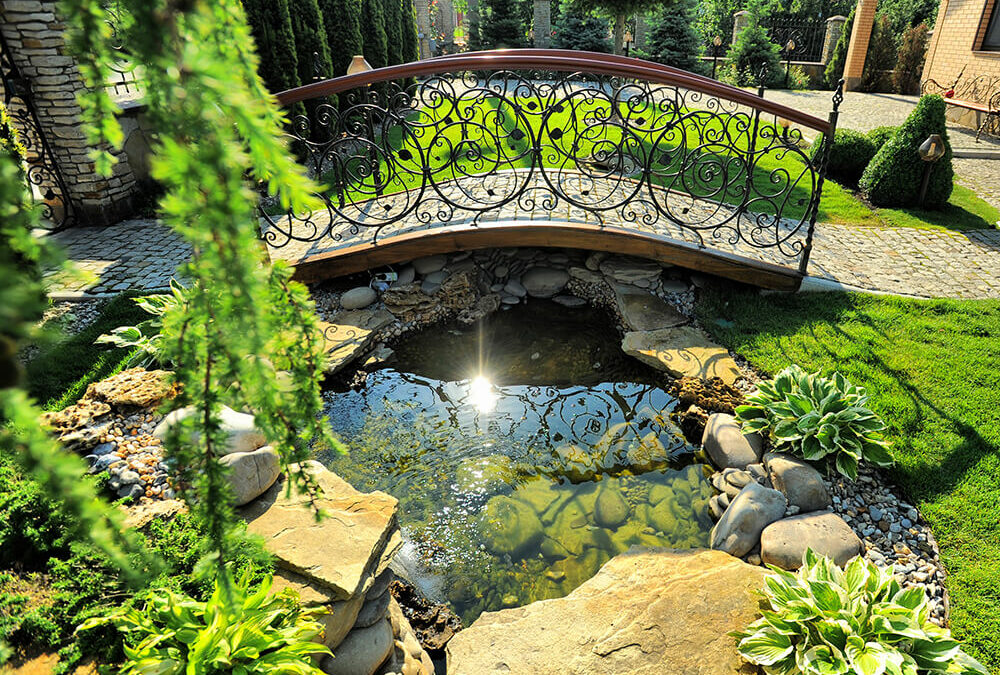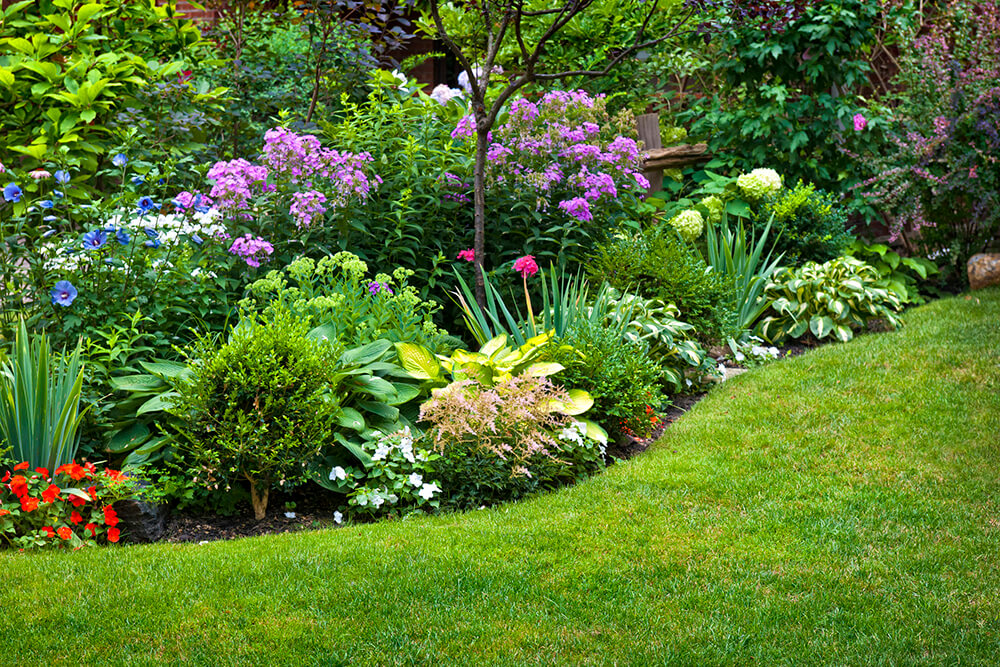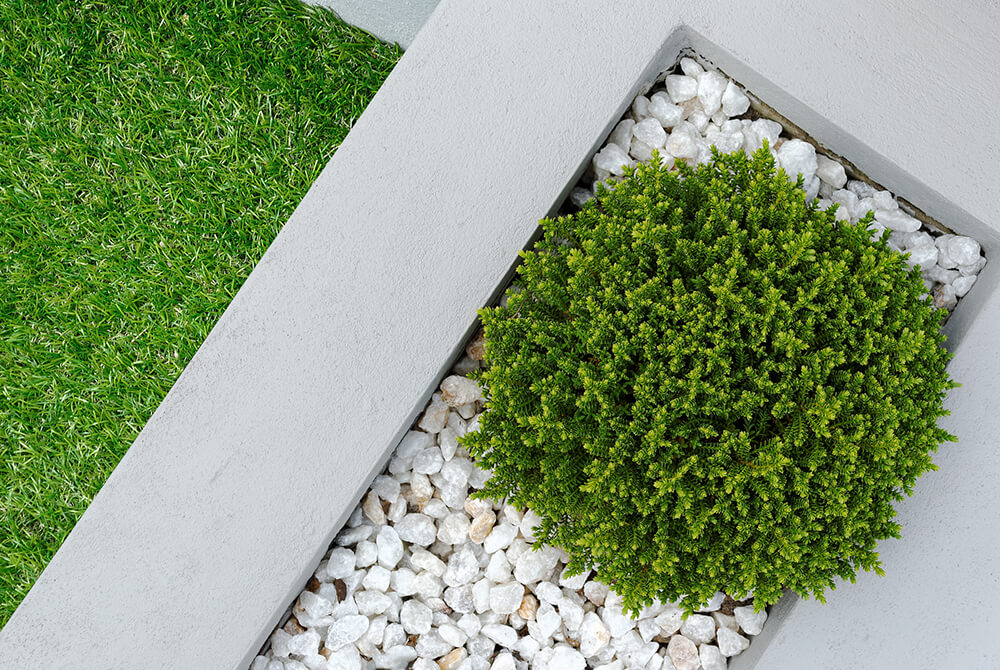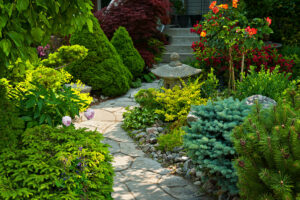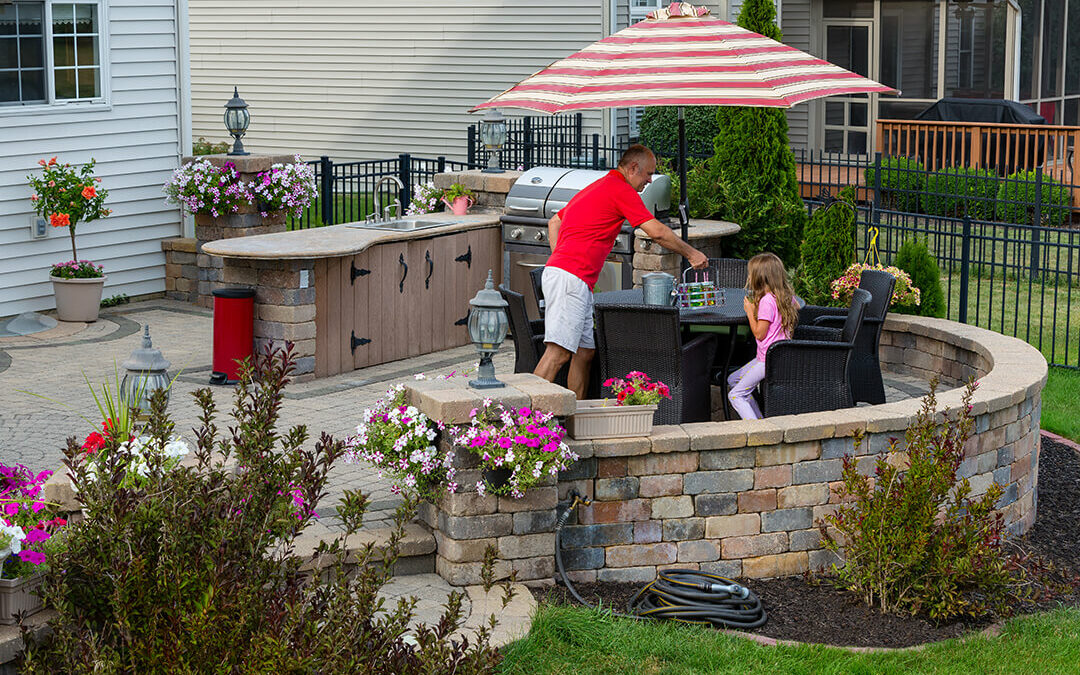
Increase the Usability of Your Yard
Landscaping is often seen as an aesthetic endeavor, but it’s much more than that. Properly designed landscaping can significantly increase the usability of your yard, turning it into a functional space for relaxation, entertainment, and everyday living. Whether you have a small urban backyard or a sprawling suburban garden, thoughtful landscaping can transform your outdoor area into an extension of your home. Here are some ideas and tips to help you achieve a practical and beautiful yard.
Assess Your Needs and Wants
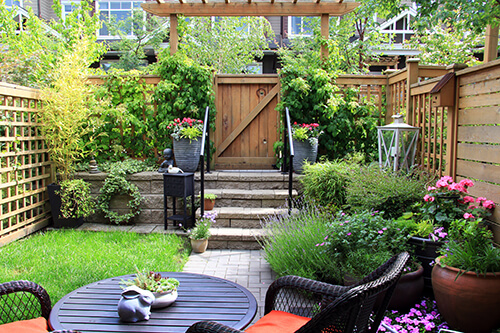 Before you start any landscaping project, it’s crucial to understand what you want from your yard. Consider the following questions:
Before you start any landscaping project, it’s crucial to understand what you want from your yard. Consider the following questions:
- Do you need a play area for children?
- Are you looking to create an outdoor dining space?
- Do you want to grow your own vegetables or herbs?
- Are you interested in creating a habitat for local wildlife?
Identifying your priorities will guide your landscaping decisions and help you create a yard that meets your practical needs.
Define Functional Zones
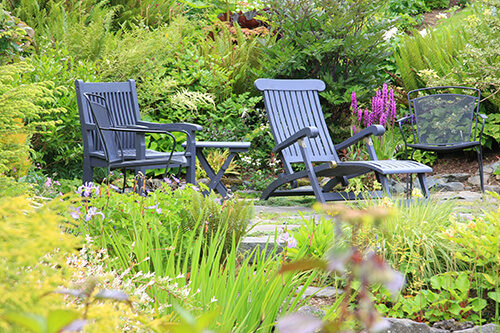 Divide your yard into functional zones based on your identified needs. For example:
Divide your yard into functional zones based on your identified needs. For example:
- Play Zone: A safe, open area with soft ground cover, such as grass or rubber mulch, for children to play.
- Dining and Entertaining Zone: A patio or deck with seating, a dining table, and possibly a grill or outdoor kitchen.
- Garden Zone: Raised beds or designated plots for growing vegetables, herbs, and flowers.
- Relaxation Zone: A quiet corner with comfortable seating, a hammock, or a water feature for relaxation.
Creating distinct zones ensures that each area serves a specific purpose and helps organize the space efficiently.
Incorporate Pathways
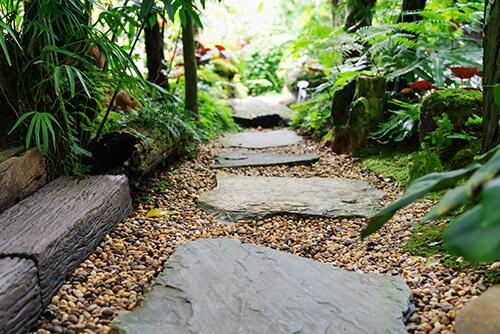 Pathways are essential for navigating your yard comfortably and safely. They connect different zones and add structure to your landscape. Choose materials that complement your yard’s style, such as natural stone, gravel, or pavers. Make sure the paths are wide enough for easy movement and, if necessary, accessible for strollers or wheelchairs.
Pathways are essential for navigating your yard comfortably and safely. They connect different zones and add structure to your landscape. Choose materials that complement your yard’s style, such as natural stone, gravel, or pavers. Make sure the paths are wide enough for easy movement and, if necessary, accessible for strollers or wheelchairs.
Take Advantage of Vertical Space
Maximize your yard’s usability by leveraging vertical space. This is particularly useful for small yards where horizontal space is limited. Consider the following ideas:
- Vertical Gardens: Use trellises, wall-mounted planters, or vertical garden systems to grow plants upwards instead of outwards.
- Climbing Plants: Train climbing plants like ivy, roses, or clematis to cover fences, walls, or pergolas, adding greenery without taking up ground space.
- Hanging Baskets: Add hanging baskets for flowers or herbs to free up ground space while adding beauty and functionality.
Choose Multi-Functional Elements
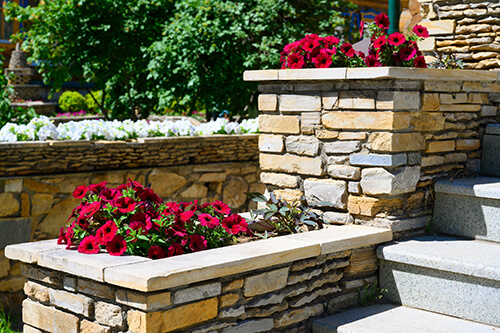 Opt for landscaping elements that serve multiple purposes to make the most of your space. Some examples include:
Opt for landscaping elements that serve multiple purposes to make the most of your space. Some examples include:
- Seating Walls: Low retaining walls can double as seating areas during gatherings.
- Planter Benches: Benches with built-in planters provide seating and greenery.
- Pergolas: Pergolas can offer shade, support climbing plants, and define outdoor rooms.
Install Water Collection and Efficient Irrigation Systems
An efficient irrigation system ensures your plants get the right amount of water without wasting resources. Consider drip irrigation or soaker hoses for garden beds, and opt for smart irrigation controllers that adjust watering schedules based on weather conditions. Efficient watering not only keeps your plants healthy but also saves you time and effort.
Embrace Low-Maintenance Landscaping
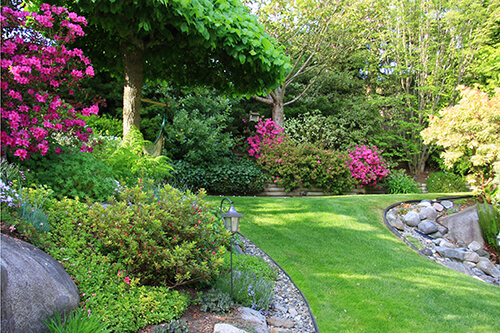 Low-maintenance landscaping allows you to enjoy your yard without spending all your free time on upkeep. Here are some tips:
Low-maintenance landscaping allows you to enjoy your yard without spending all your free time on upkeep. Here are some tips:
- Choose Native Plants: Native plants are adapted to your local climate and soil, requiring less water and maintenance.
- Use Mulch: Mulching garden beds helps retain moisture, suppress weeds, and improve soil health.
- Opt for Perennials: Perennial plants come back year after year, reducing the need for replanting.
Add Lighting
Outdoor lighting extends the usability of your yard into the evening and enhances safety and security. Consider the following options:
- Path Lights: Illuminate pathways to prevent trips and falls.
- String Lights: Add a warm, inviting glow to seating and dining areas.
- Spotlights: Highlight key features, such as trees, sculptures, or water features.
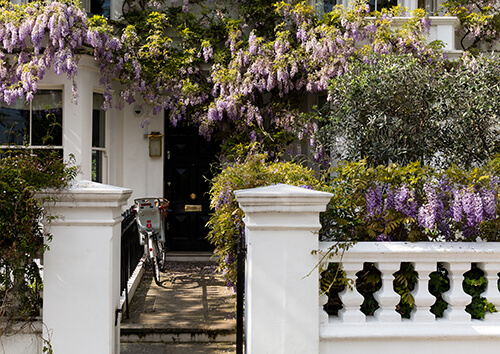
Create Privacy
Privacy is essential for a comfortable and enjoyable yard. Create privacy by using fencing, hedges, or screens to create secluded areas. Tall plants, trellises with climbing vines, or decorative panels can also add privacy without making the space feel closed off.
Incorporate Sustainable Practices
Sustainable landscaping practices benefit both your yard and the environment. Some ideas include:
- Rainwater Harvesting: Collect rainwater in barrels for use in irrigation.
- Composting: Compost kitchen scraps and yard waste to create nutrient-rich soil for your garden.
- Xeriscaping: Use drought-tolerant plants to reduce water consumption.
By thoughtfully designing your landscape with functionality in mind, you can create a yard that enhances your lifestyle and meets your practical needs. Whether you’re looking to entertain, grow your own food, or simply relax, a well-planned yard can become a valuable extension of your living space. Happy landscaping!
Would you like more specific tips or information on any particular aspect of yard landscaping? Contact us for professional landscaping services.


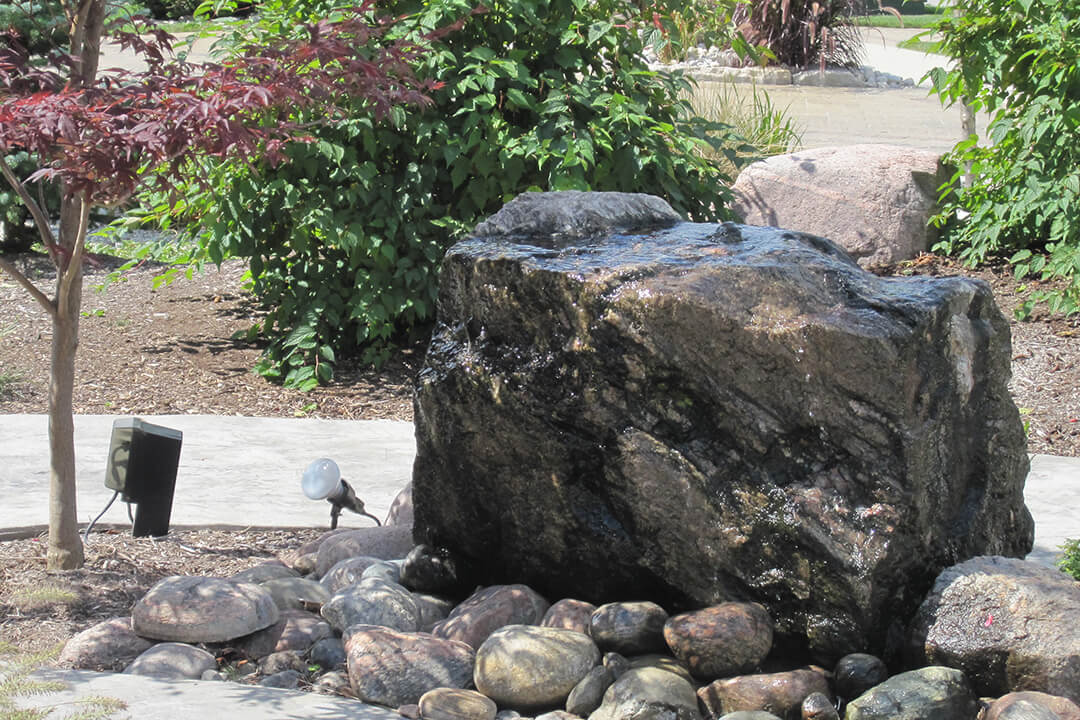 Aesthetic Appeal: Bubbling rocks add a focal point to your garden,
Aesthetic Appeal: Bubbling rocks add a focal point to your garden,  One of the lesser-known benefits of bubbling rocks is their ability to attract beneficial insects, particularly bees and butterflies. These creatures are vital for pollination, and their presence can significantly enhance the health and vibrancy of your garden.
One of the lesser-known benefits of bubbling rocks is their ability to attract beneficial insects, particularly bees and butterflies. These creatures are vital for pollination, and their presence can significantly enhance the health and vibrancy of your garden.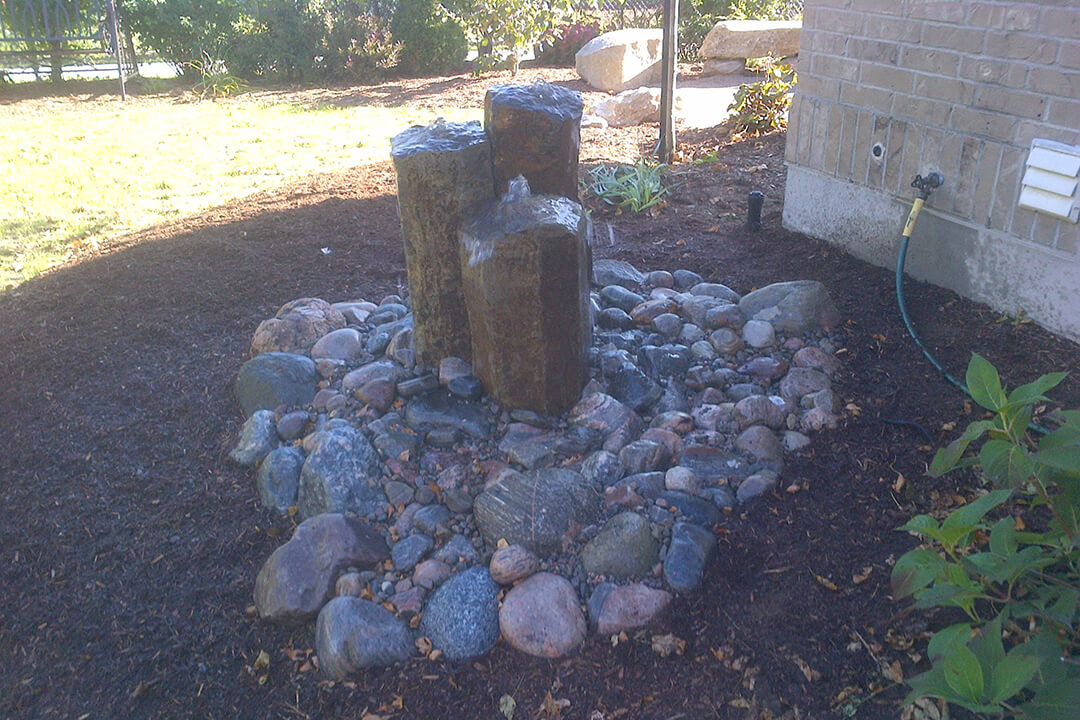 To keep your bubbling rocks functioning optimally and to maintain their visual appeal, regular maintenance is essential. Here are some tips to ensure your water feature remains in top condition:
To keep your bubbling rocks functioning optimally and to maintain their visual appeal, regular maintenance is essential. Here are some tips to ensure your water feature remains in top condition: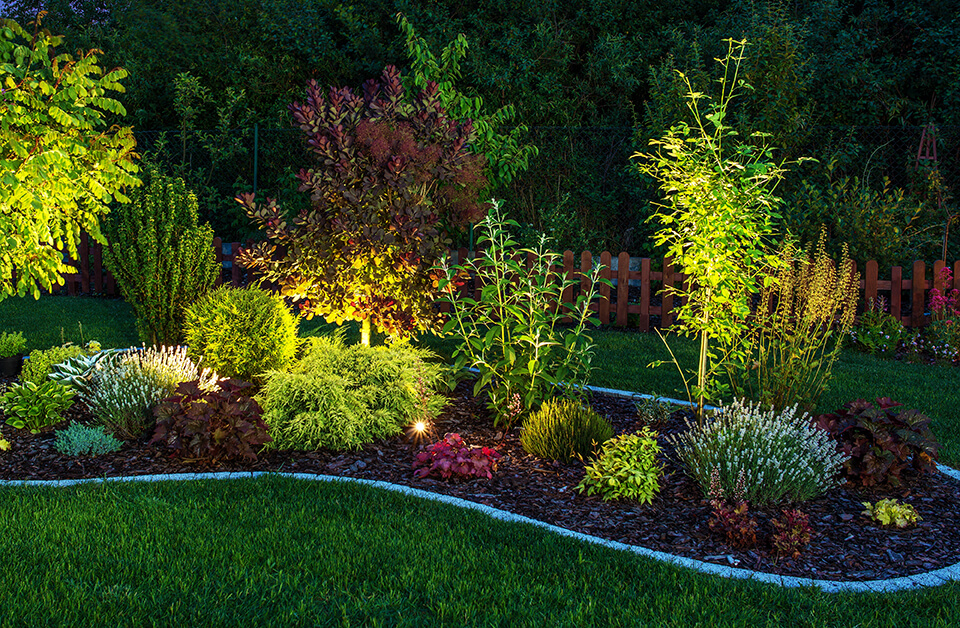
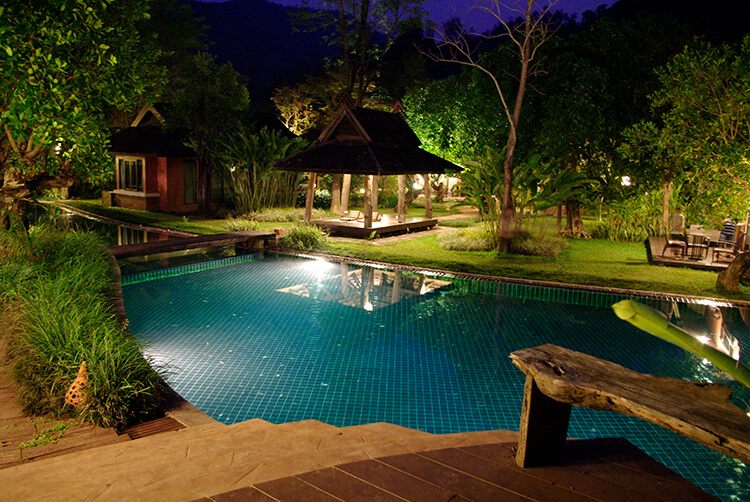
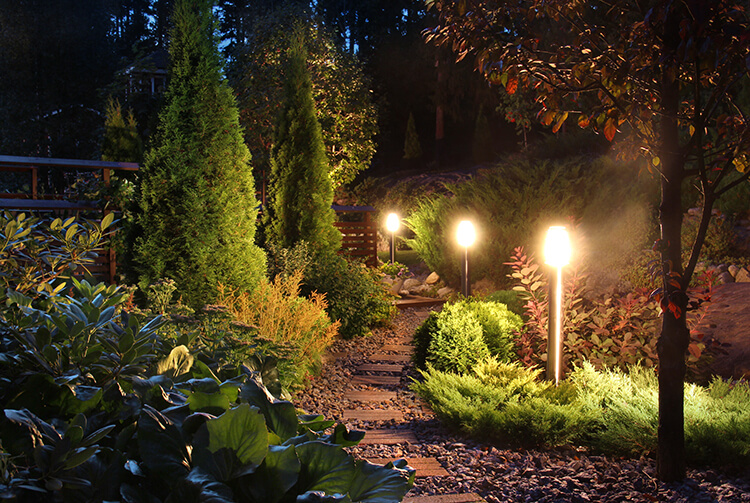 Path Lighting: Path lighting is typically used to illuminate walkways, driveways, and other paths throughout your property. It can be used to create a subtle, welcoming ambiance or to guide visitors safely to your home.
Path Lighting: Path lighting is typically used to illuminate walkways, driveways, and other paths throughout your property. It can be used to create a subtle, welcoming ambiance or to guide visitors safely to your home.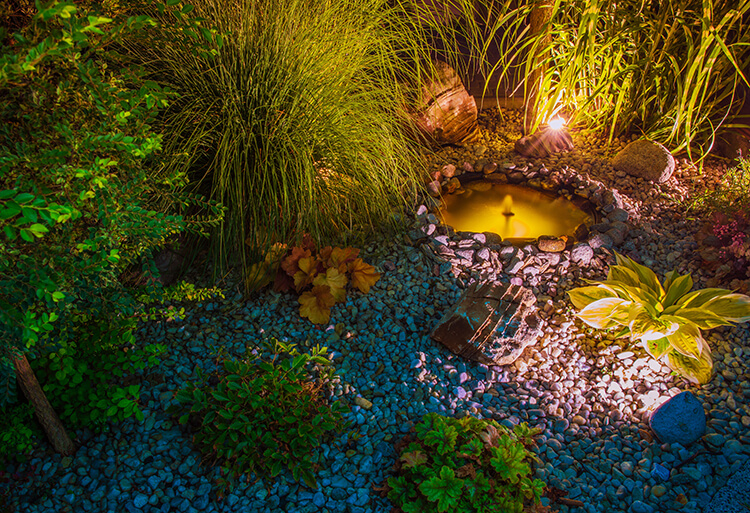 Security – Landscape lighting can enhance security by illuminating entryways, driveways, and pathways. It can also deter potential intruders by illuminating dark areas around your property.
Security – Landscape lighting can enhance security by illuminating entryways, driveways, and pathways. It can also deter potential intruders by illuminating dark areas around your property.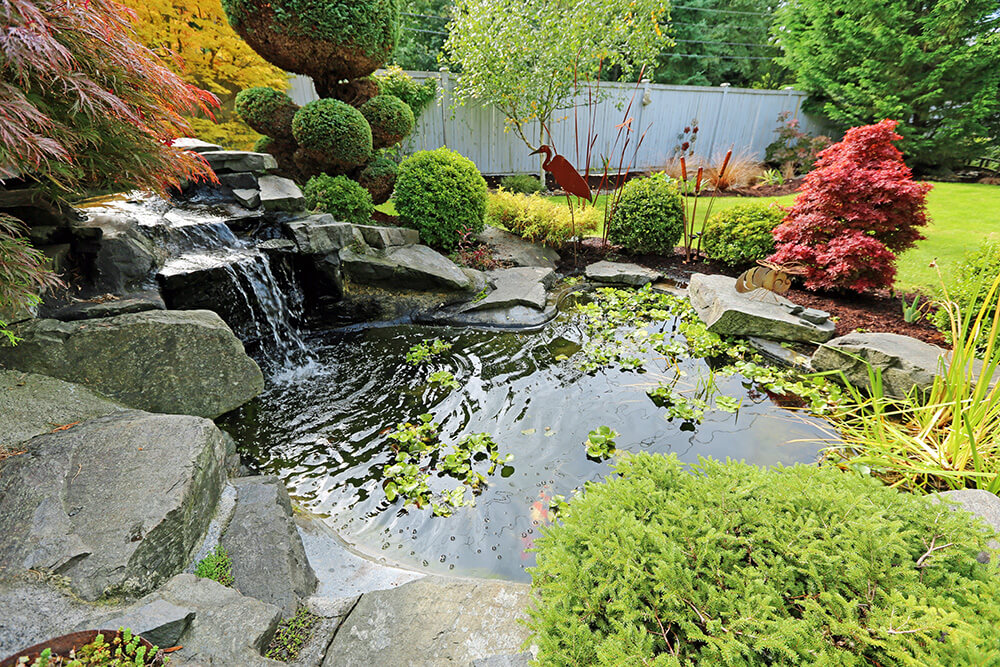
 Planting a variety of
Planting a variety of  Providing a source of water is essential for wildlife in your backyard. Bird baths and
Providing a source of water is essential for wildlife in your backyard. Bird baths and 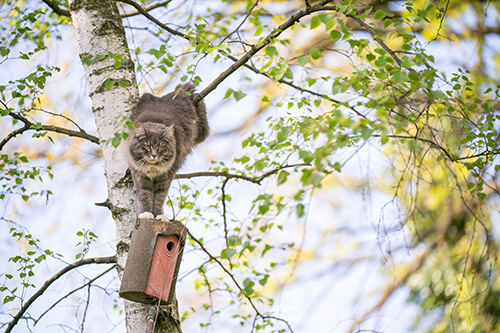 Keeping pets indoors or away from areas of wildlife activity is an important part of protecting wildlife in your backyard. Cats and dogs may be attracted to the small animals in your yard, such as birds, rodents, or other creatures. It is best to keep these pets inside or restrain them while they are outside so they do not disturb or harm any wildlife.Additionally, make sure that any outdoor dog runs are not set up in areas where wildlife likes to rest and feed. By taking these extra steps you can ensure that both your pets and the local wildlife stay safe and happy.
Keeping pets indoors or away from areas of wildlife activity is an important part of protecting wildlife in your backyard. Cats and dogs may be attracted to the small animals in your yard, such as birds, rodents, or other creatures. It is best to keep these pets inside or restrain them while they are outside so they do not disturb or harm any wildlife.Additionally, make sure that any outdoor dog runs are not set up in areas where wildlife likes to rest and feed. By taking these extra steps you can ensure that both your pets and the local wildlife stay safe and happy.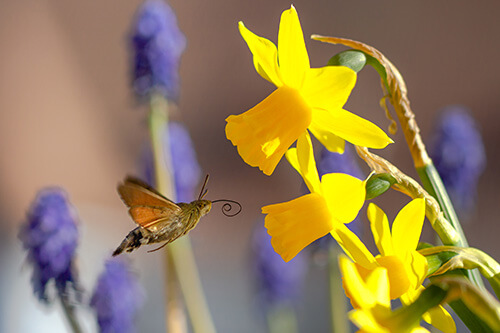 Providing undisturbed areas in your garden is a great way to support local wildlife. By leaving some areas of your garden untouched, you are giving animals the chance to make their own homes without interruption from people or pets.This can take the form of wild patches of grass, untended corners of your yard, or piles of sticks and logs that provide harborage for small creatures. Even if it seems like doing nothing is best, keeping these areas free from human activity and disturbance will be beneficial to the wildlife that makes use of them.
Providing undisturbed areas in your garden is a great way to support local wildlife. By leaving some areas of your garden untouched, you are giving animals the chance to make their own homes without interruption from people or pets.This can take the form of wild patches of grass, untended corners of your yard, or piles of sticks and logs that provide harborage for small creatures. Even if it seems like doing nothing is best, keeping these areas free from human activity and disturbance will be beneficial to the wildlife that makes use of them.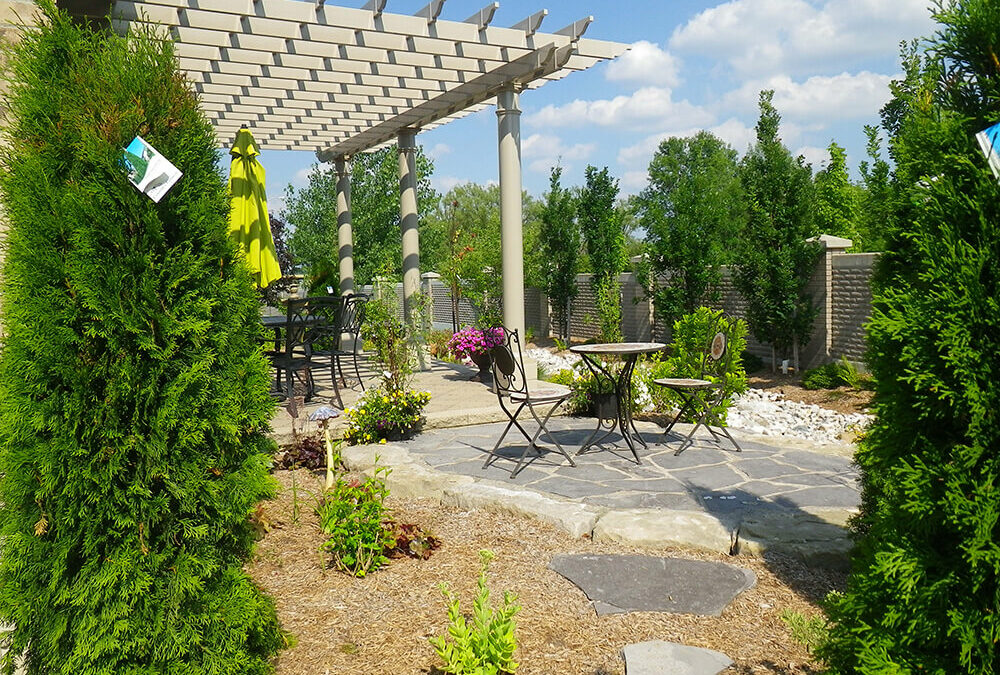
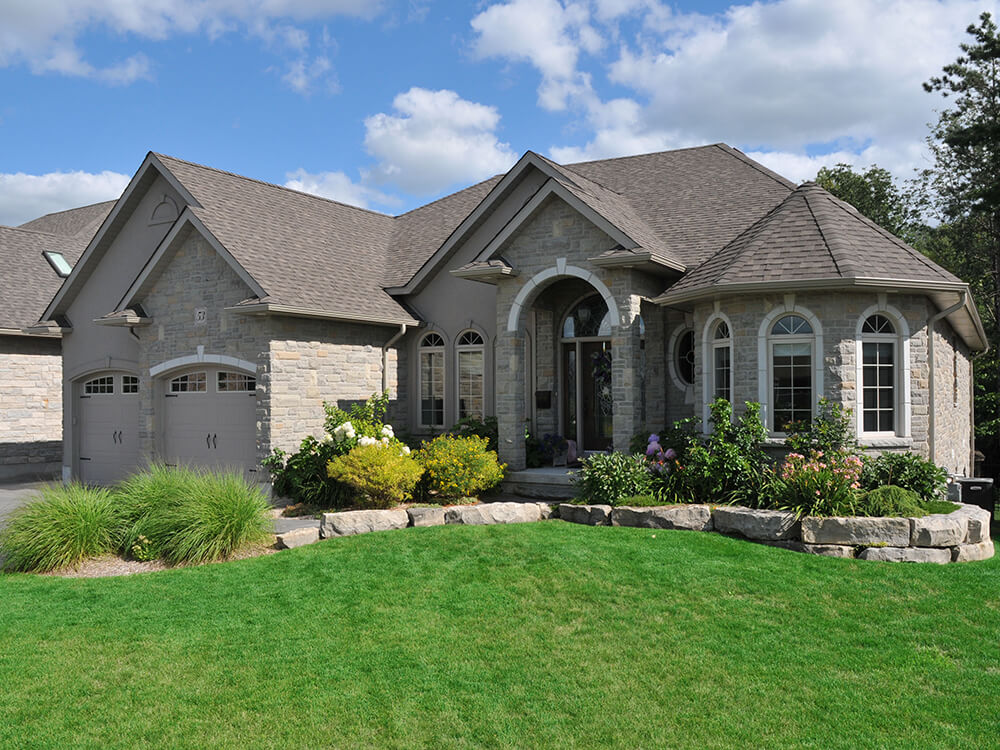 If you search online for ways to increase a home’s value, one method that almost invariably tops the list is to increase your home’s curb appeal. After all, the front of your home provides the first impression for potential buyers, whether they’re passing by or viewing your home online.
If you search online for ways to increase a home’s value, one method that almost invariably tops the list is to increase your home’s curb appeal. After all, the front of your home provides the first impression for potential buyers, whether they’re passing by or viewing your home online.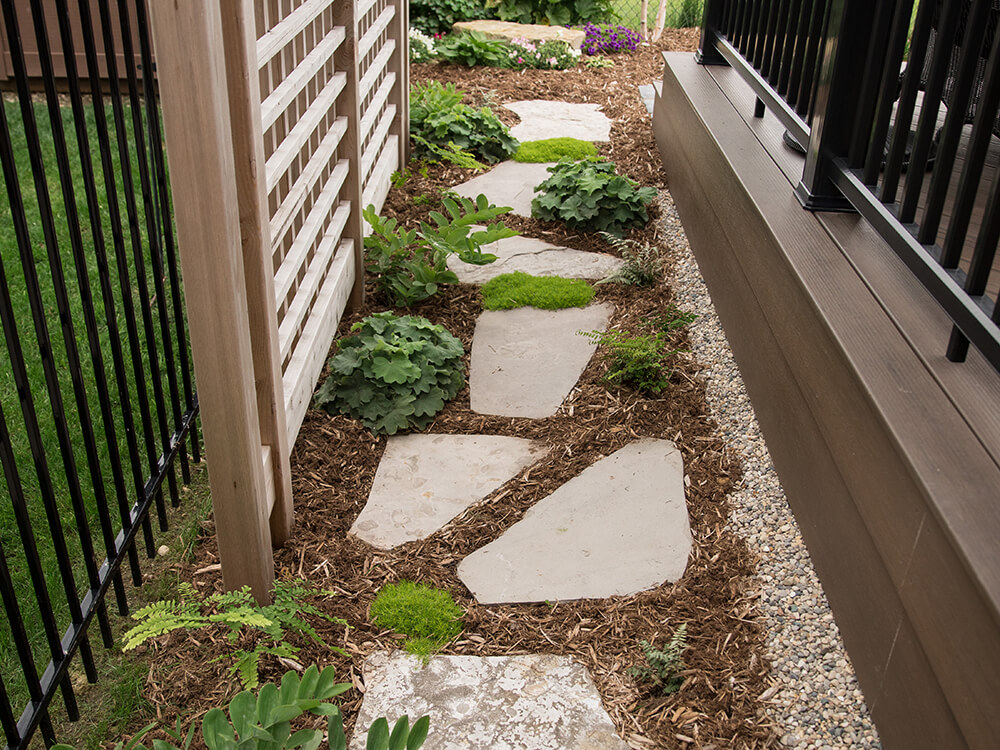 If you’re looking to upgrade your home’s exterior – front, sides, or back – consider updates that will enhance livability, functionality, and practicality. Not only will this maximize your enjoyment, but when it comes time to sell, potential buyers will be able to see themselves relaxing in, rather than working on, the yard and gardens.
If you’re looking to upgrade your home’s exterior – front, sides, or back – consider updates that will enhance livability, functionality, and practicality. Not only will this maximize your enjoyment, but when it comes time to sell, potential buyers will be able to see themselves relaxing in, rather than working on, the yard and gardens.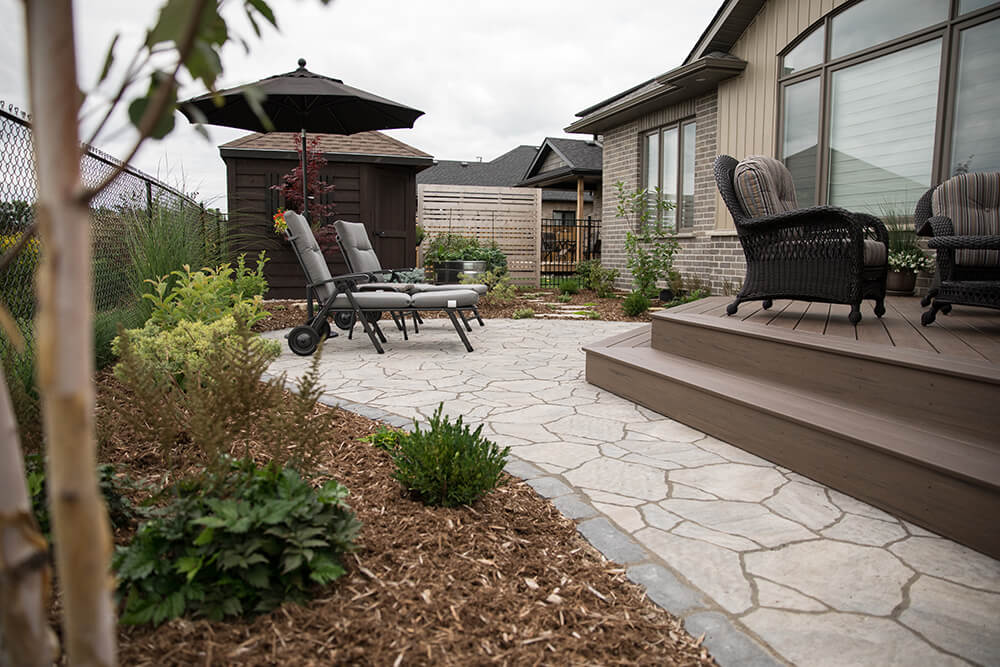 Walkways, patios, and retaining walls are gratifying additions to a home’s exterior. In keeping with the theme of minimal maintenance, though – a focus of almost every one of our customers – we recommend being mindful of the materials you use.
Walkways, patios, and retaining walls are gratifying additions to a home’s exterior. In keeping with the theme of minimal maintenance, though – a focus of almost every one of our customers – we recommend being mindful of the materials you use.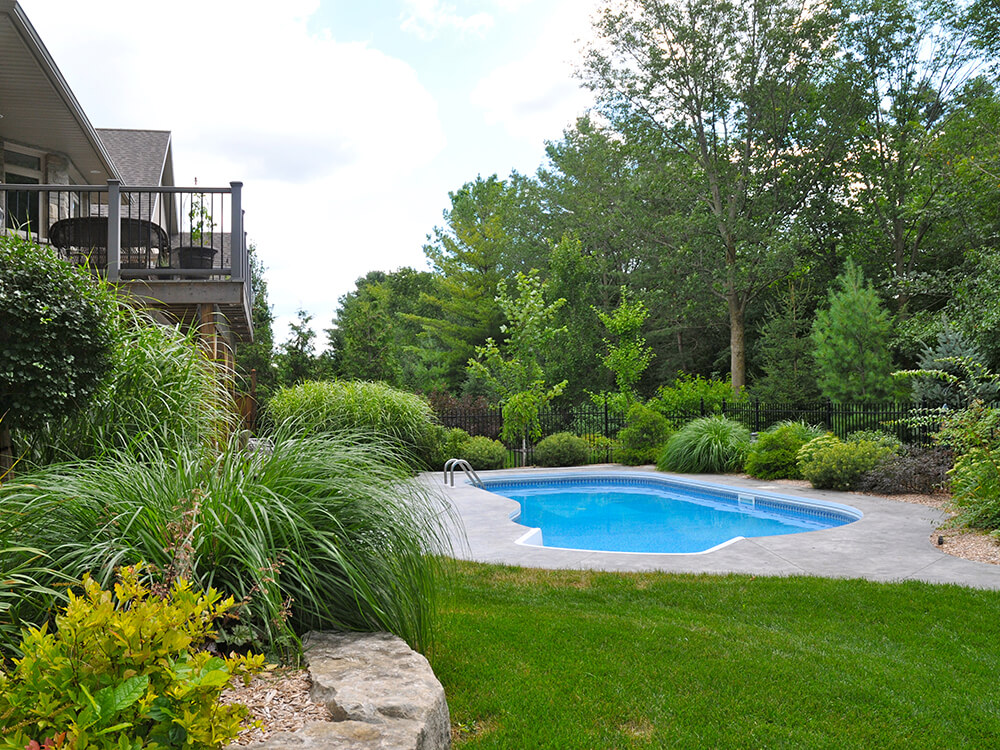 Plants, trees, and shrubs can be used to camouflage imperfections, add privacy, and enhance the existing beauty around your home’s exterior and yard. For example, an exposed foundation can make a home appear old and unkempt. But, planting a balanced selection of plants and shrubs appropriate for the location’s sun exposure can add depth and colour, providing a welcome distraction from your foundation’s drab, grey expanse.
Plants, trees, and shrubs can be used to camouflage imperfections, add privacy, and enhance the existing beauty around your home’s exterior and yard. For example, an exposed foundation can make a home appear old and unkempt. But, planting a balanced selection of plants and shrubs appropriate for the location’s sun exposure can add depth and colour, providing a welcome distraction from your foundation’s drab, grey expanse.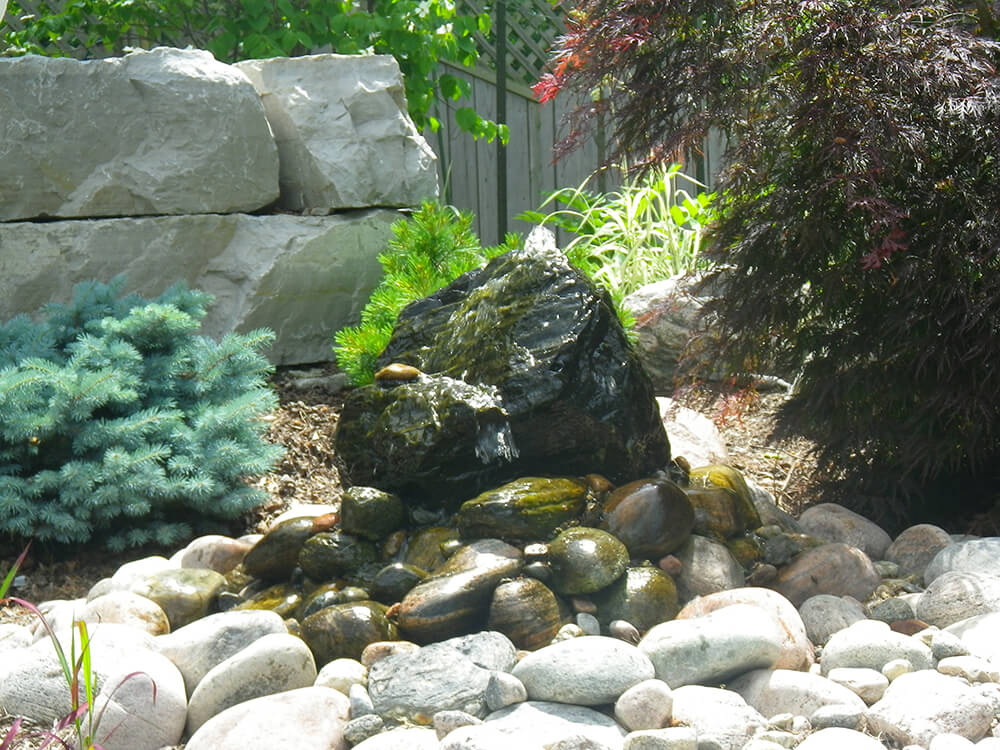 Add unique atmosphere to your outdoor living areas, walkways, and/or front entrance with lighting and water. Ponds, streams, waterfalls, fountains, and bubbling rocks add an audio-visual element that has a universally relaxing effect. And including lighting along walkways, trees, water features, pools, and patios enhances outdoor safety and enjoyment after the sun goes down.
Add unique atmosphere to your outdoor living areas, walkways, and/or front entrance with lighting and water. Ponds, streams, waterfalls, fountains, and bubbling rocks add an audio-visual element that has a universally relaxing effect. And including lighting along walkways, trees, water features, pools, and patios enhances outdoor safety and enjoyment after the sun goes down.